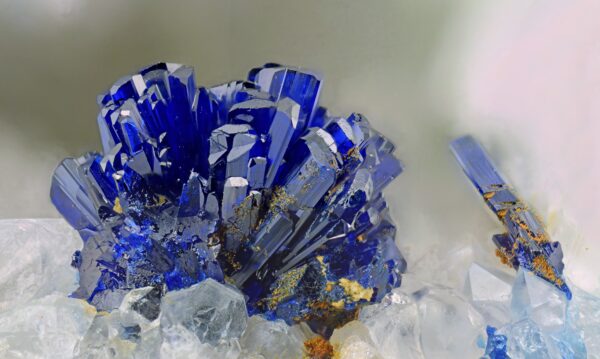10 Benefits of Investing in the Coloured-Gemstone Mining sector in Zimbabwe

10 Benefits of Investing in the Coloured-Gemstone Mining sector in Zimbabwe
by Maison Phiri
- Diamond vs. Coloured stones.
The diamond has been perceived by investors as the king of gemstones due to its gem characteristics that exceed other stones. However, investors ought to know that there are coloured stones which can exceed US$10,000/carat. This is a price that most fine varieties of diamonds cannot exceed. Bixbite (red beryl) and Alexandrite, can exceed this price and both findings have been reported in Zimbabwe. It should also be taken seriously that the diamond has suffered a serious blow from synthetics. This has caused the diamond prices to plummet, especially for the small stones and low grades. Perhaps, it is time for gemstone investors to begin assessing the potential of rare coloured gemstones such as the ones in Zimbabwe.
2. Zimbabwe: The finest candidate for a SADC gemstone Hub.
The centrality of the gemstone industry in the region is of paramount importance. This brings the attention of additional investment, marketing, and partnerships to one place. Zimbabwe is that fine candidate to hold regular gemstone fairs, establish cutting centres, schools, and certifying laboratories for the region. Zimbabwe should become the trade centre for the gemstones in the region. This is because the country has deposits for more than 90% of all gems found in the region. The country is also central to the region, making easy accessibility. Any investor serious in gemstone mining in Zimbabwe should consider the prospects of developing their product value chain towards the idea of a hub.
- Multi-commodity deposits.
The advanced technology in exploration has not been fully exercised for gemstone prospecting in Zimbabwe. Much of the current workings are artisanal small scale mining. This brings the idea that gemstones are under-explored in Zimbabwe. However, the small scale miners have established a presence of multi-commodity deposits. The pegmatite gemstones in Karoi are usually beryl and tourmaline with mica as a bi-product. In the Makaha area, the beryl is also associated with some tantalite. These Zimbabwean deposits are therefore multi-commodity and this is ideal for any investment.
- Investing in a “Blue Ocean” strategy.
Investors willing to explore an unchallenged industry in Zimbabwe should consider gemstone mining. The gold mining is definitely a “Red ocean” strategy. However, there is no major company in Zimbabwe which is currently mining gemstones. There is no major company developing the value chain either. Therefore, this is a sector where a focused investor is capable of establishing a controlling stake in the industry.
- Low-Cost Mining.
The basics of gemstone mining in Zimbabwe are currently pit mining. This can be expanded into wholesome open cast mining depending on the extent and geometry of each resource. The cost of mining is relatively low compared to other mineral commodities which are usually hosted in complicated deposit geometries.
- Easy and low-cost processing.
The processing of gemstones is usually crushing, washing, and picking. This is relatively easy and cheap as compared to other commodities that may require the establishment of flotation cells, leaching tanks, and the consumption of sophisticated chemicals. In gemstone processing for the production of rough, there are no complicated processes, chemicals nor excessive specialist labour.
- Ready synergies with ASMs
The Artisanal and Small Scale Miners, through the Zimbabwe Miners’ Federation, is open to joint ventures, partnerships, and sponsorship of their current mining activities. This serves as a low hanging fruit for investors who are eager for production and quick turnaround for their investment.
- Prospective for secondary business. (Vertical integration)
Mining alone cannot achieve optimum profits for an investment in the gemstone industry. The rough stones can be polished, set in jewellery and sold on local or international auctions as a finished product. These secondary businesses are also potential for investment. An investor should be capable of developing their product from mine to the factory and finally to the market.
- Keystone to the development of other industries.
Apart from the vertical integration prospects, other businesses such as precious metals mining, tourism, and freight may boom from gemstone mining alone. This gives rise to other business investment potential in dependant but different streams.
- Sustainable development.
The Gemstone mining industry lacks sustainable development. It is hoped that as more investment is brought in, more formalisation of the sector occurs. It would then be correct that each investor develops the current mining to sustainable levels and therefore invests in the future of the environment and society. Investors are encouraged to put their capital where community development and limited environmental harm is the first priority.
Maison Phiri
BSc, MBA, GG


